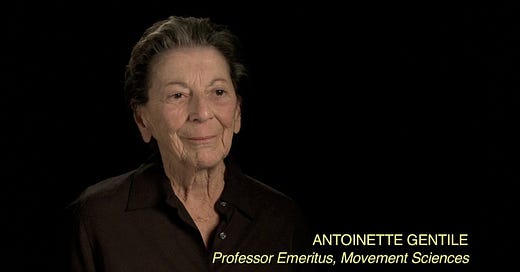When is Kneeling Used as a Starting Position in Patients with Upper Motor Neuron (UMN) Lesions?
This is a question that often trips people up, and understandably so. To answer it properly, we need to take a step back and understand the broader concept of "starting positions" in rehabilitation.
What Are Starting Positions?
A starting position is simply the posture a person assumes before beginning an exercise. But it’s more than just where you place the body—it’s about why that position is chosen.
Principles for Choosing a Starting Position
Optimal Muscle Activation: The position should allow the target muscles to work through their full (or required) range.
Isolation or Optimization: Sometimes we want to isolate a muscle group or optimize its activity—though this is often more relevant for impairment-level exercises.
There is a issues with the above said prinicples, as we know real world functional movements, muscles don't work in isolation. Movements are usually multi-joint, multi-muscle, and goal-directed. So unless you're working on a very specific impairment, starting positions should reflect the functional goal you're working toward.
So... What About Kneeling?
When it comes to UMN lesions (like stroke or cerebral palsy), kneeling is often used in traditional therapy as a "starting position." But let's ask the important question:
What functional goal does kneeling help the patient achieve?
Honestly, not much. Kneeling is not a typical position we use in everyday life unless you're praying or being punished (and that’s not exactly therapeutic). So, prescribing kneeling for rehab seems more historical than practical.
Where Did the Idea Even Come From?
The roots of kneeling, crawling, and other “mat activities” trace back to early 1900s neurorehabilitation models—specifically the reflex-hierarchical model. Here's what that model proposed:
The nervous system is structured hierarchically.
Higher centers (like the cortex) control lower centers (like the brainstem and spinal cord).
When there's brain damage, the system "regresses" to earlier developmental stages—like infancy.
So, therapy was based on re-enacting developmental milestones: lying, rolling, crawling, kneeling, and so on.
Within this framework, physiotherapy techniques evolved from Rood's approach to the Bobaths' Neuro-Developmental Treatment (NDT). The underlying assumption was that patients needed to be taken back to the infant stage—starting with rolling, then progressing through crawling, kneeling, and so on.
But is that still valid today? of course not. We know the system is not arranged in heirachial manner rather as networks. The brain does not regress to infancy when there is a insult to it. Mat exercises and kneeling are just unnecessary starting position in patients with UMN lesion.
You might argue that crawling and kneeling are important milestones for children with cerebral palsy. But realistically, do you actually see many children under 8 months old in your practice? And even if you do—how crucial is crawling, really? Does it truly matter if we choose to bypass that particular milestone? Isnt achieving say sitting balance are far more valuable miles stone to achieve?
Postscript.
Qquadruped, kneeling, and other mat-based starting postures may have value in sports training—for example, for athletes training in wrestling, judo, and similar disciplines. Occasionally, exercises from these positions are used in gyms for all sports persons simply for novelty. But for athletes like runners or basketball players, their relevance is quite limited. Still, these non-specific exercises have spread like a virus in coaching circles. And honestly, it seems no amount of understanding or reasoning can stop it. (This topic for another time though)
For PTs who what to read motor behaviour, motor skill aquisation and treatment model in Neurorehab and in sports you need to keep the instagram a rest and start with the great Antoinette M. Gentile, then Carr and shepard. If not you will always be 50 years behind
if you want to read about Antoinette (Ann) Gentile, click on her name
And if you dont know who Carr and Shepard go and kick your neurorehab teacher in her head or in the nuts if its a he.





Even though the whole article is a bliss , am more fascinated with the last three lines....